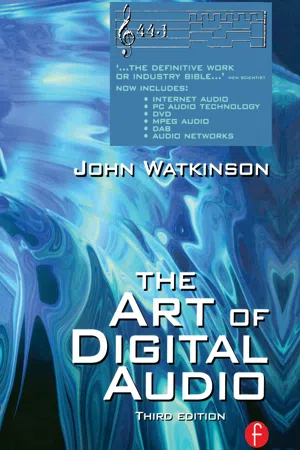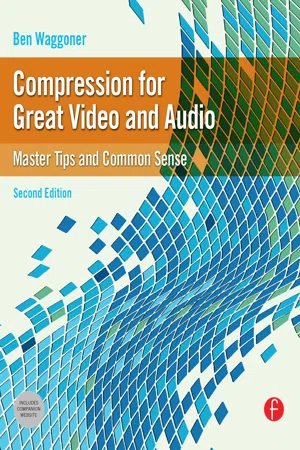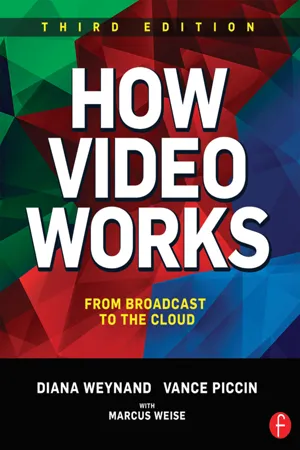Lempel Ziv Welch
Lempel-Ziv-Welch (LZW) is a lossless data compression algorithm that is widely used in computer science. It works by replacing repeated occurrences of data with references to a single copy of that data. LZW is known for its efficiency in compressing data and is commonly used in file compression formats such as GIF and TIFF.
4 Key excerpts on "Lempel Ziv Welch"
- eBook - ePub
- John Watkinson(Author)
- 2013(Publication Date)
- Routledge(Publisher)
...The bit will be a zero for the most probable path and one for the least. The compressed output is obtained by reading the bits which describe which path to take going from right to left. Figure 5.4 The Huffman code achieves compression by allocating short codes to frequent values. To aid deserializing the short codes are not prefixes of longer codes. In the case of computer data, there is no control over the data statistics. Data to be recorded could be instructions, images, tables, text files and so on; each having their own code value distributions. In this case a coder relying on fixed source statistics will be completely inadequate. Instead a system is used which can learn the statistics as it goes along. The Lempel–Ziv–Welch (LZW) lossless codes are in this category. These codes build up a conversion table between frequent long source data strings and short transmitted data codes at both coder and decoder and initially their compression factor is below unity as the contents of the conversion tables are transmitted along with the data. However, once the tables are established, the coding gain more than compensates for the initial loss. In some applications, a continuous analysis of the frequency of code selection is made and if a data string in the table is no longer being used with sufficient frequency it can be deselected and a more common string substituted. Lossless codes are less common in audio coding where perceptive codes are more popular. The perceptive codes often obtain a coding gain by shortening the wordlength of the data representing the signal waveform. This must increase the level of quantizing distortion and for good perceived quality the encoder must ensure that the resultant distortion is placed at frequencies where human senses are least able to perceive it. As a result although the received signal is measurably different from the source data, it can appear the same to the human listener under certain conditions...
- eBook - ePub
- John Watkinson(Author)
- 2013(Publication Date)
- Routledge(Publisher)
...The bit will be a zero for the most probable path and one for the least. The compressed output is obtained by reading the bits which describe which path to take going from right to left. In the case of computer data, there is no control over the data statistics. Data to be recorded could be instructions, images, tables, text files and so on; each having their own code value distributions. In this case a coder relying on fixed source statistics will be completely inadequate. Instead a system is used which can learn the statistics as it goes along. The Lempel– Ziv–Welch (LZW) lossless codes are in this category. These codes build up a conversion table between frequent long source data strings and short transmitted data codes at both coder and decoder and initially their compression factor is below unity as the contents of the conversion tables are transmitted along with the data. However, once the tables are established, the coding gain more than compensates for the initial loss. In some applications, a continuous analysis of the frequency of code selection is made and if a data string in the table is no longer being used with sufficient frequency it can be deselected and a more common string substituted. Lossless codes are less common in audio coding where perceptive codes are more popular. The perceptive codes often obtain a coding gain by shortening the wordlength of the data representing the signal waveform. This must increase the level of quantizing distortion and for good perceived quality the encoder must ensure that the resultant distortion is placed at frequencies where human senses are least able to perceive it. As a result although the received signal is measurably different from the source data, it can appear the same to the human listener under certain conditions...
- eBook - ePub
Compression for Great Video and Audio
Master Tips and Common Sense
- Ben Waggoner(Author)
- 2013(Publication Date)
- Routledge(Publisher)
...In essence, the data is stored as a series of pairs of numbers, the first giving the color of the sequence and the second indicating how many pixels long that line should be. This works very well for content like screenshots of Windows 2000 era operating systems, with long lines of the same value (although with modern antialiasing, textures, and backgrounds). It can also work well for text, since a sharp edge isn’t any harder to encode than a soft one, although a soft, antialiased edge can require several samples. However, RLE is terrible at handling natural images such as photographs (or a modern OS like Vista/Windows 7’s Aero Glass or Mac OS X). Just a slight amount of random noise can cause the image to be as large as an uncompressed file, because if each pixel is even slightly different from its neighbor, there aren’t any horizontal lines of the same value. With a seemingly simple “01010101” repeating pattern, RLE wouldn’t be able to compress the file at all, since there is never more than one identical value in a row. Advanced Lossless Compression with LZ77 and LZW As mentioned earlier, the more the structure of data is predictable, the more efficient the compression can be. The first highly compressed file formats were based on either the LZ77 (Lempel Ziv 1977) or the LZW (Lempel-Ziv-Welch) algorithms (Abraham Lempel and Jacob Ziv have had a huge impact on digital media, and Terry Welch is no slouch either). I’ll spare the details, but they’re both essentially combinations of advanced RLE with Huffman coding. Both build a codebook as they go, and then look for repeated strings of the same symbols and assign those codes as well. LZW was adopted by Adobe for TIFF and CompuServe for GIF (predating JPEG). Both were pretty straightforward implementations; they just started in the upper-left corner and encoded pixel-by-pixel...
- eBook - ePub
How Video Works
From Broadcast to the Cloud
- Diana Weynand, Vance Piccin(Authors)
- 2015(Publication Date)
- Routledge(Publisher)
...14 Compression Compression is the process of reducing data in a digital signal by eliminating redundant information. This process reduces the amount of bandwidth required to transmit the data and the amount of storage space required to store it. Any type of digital data can be compressed. Reducing the required bandwidth permits more data to be transmitted at one time. Compression can be divided into two categories: lossless and lossy. In lossless compression, the restored image is an exact duplicate of the original with no loss of data. In lossy compression, the restored image is an approximation, not an exact duplicate, of the original (Figure 14.1). Lossless Compression In lossless compression, the original data can be perfectly reconstructed from the compressed data that was contained in the original image. Compressing a document is a form of lossless compression in that the restored document must be exactly the same as the original. It cannot be an approximation. In the visual world, lossless compression lends itself to images that contain large quantities of repeated information, such as an image that contains a large area of one color, perhaps a blue sky. Computer-generated images or flat colored areas that do not contain much detail—e.g., cartoons, graphics, and 3D animation—also lend themselves to lossless compression. Figure 14.1 Lossless vs Lossy Compression One type of lossless compression commonly used in graphics and computer-generated images (CGI) is run-length encoding. These images tend to have large portions using the same colors or repeated patterns. Every pixel in a digital image is composed of the three component colors—red, green, and blue—and every pixel has a specific value for each color...



